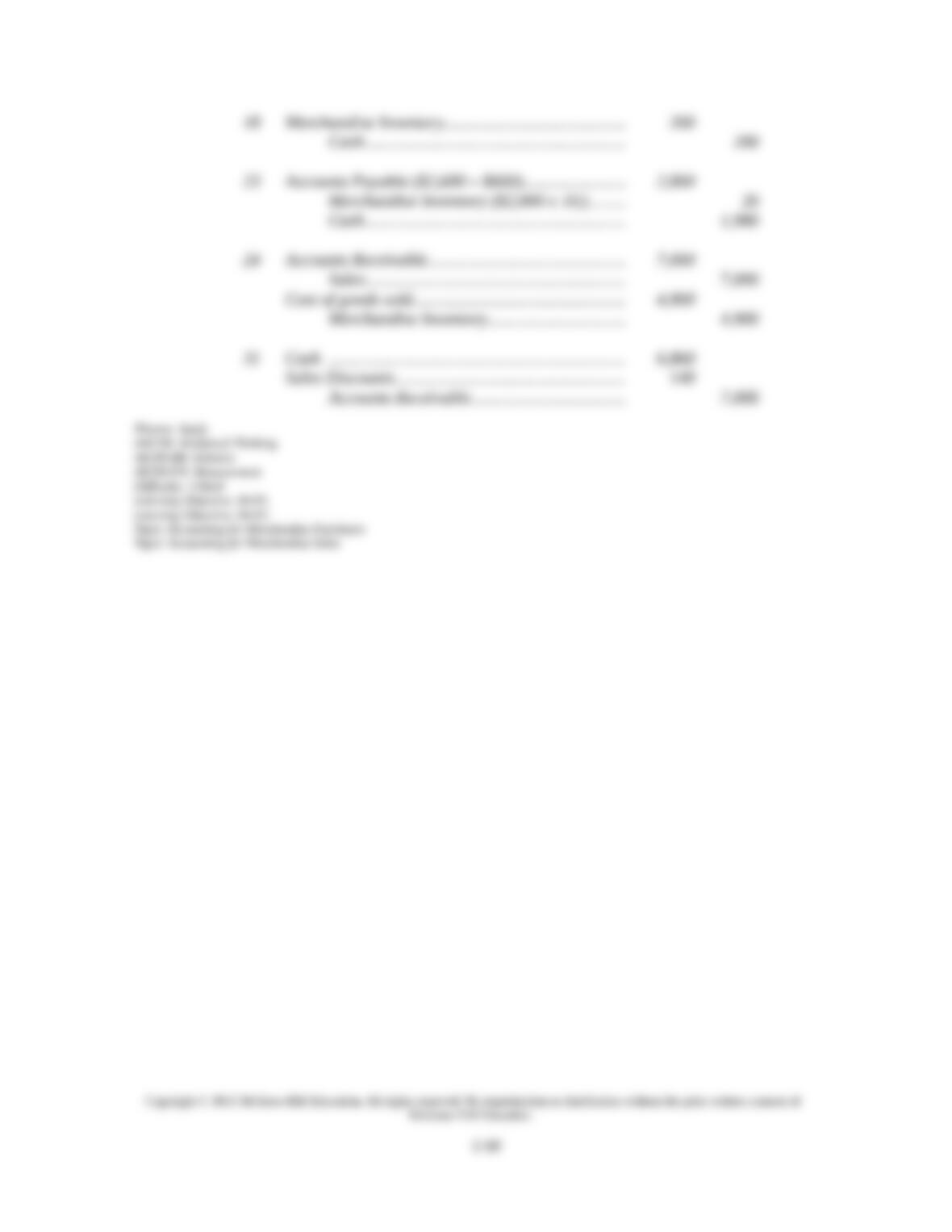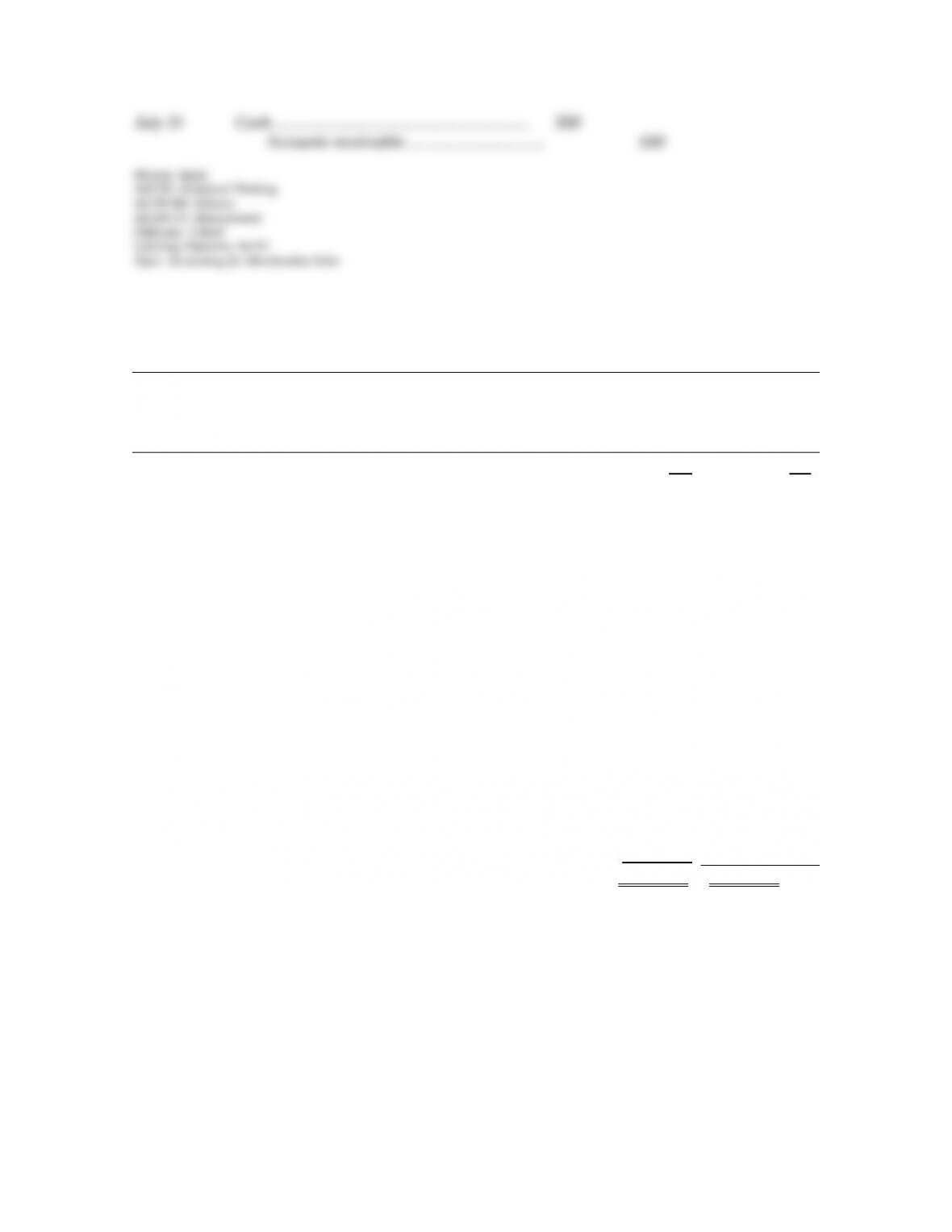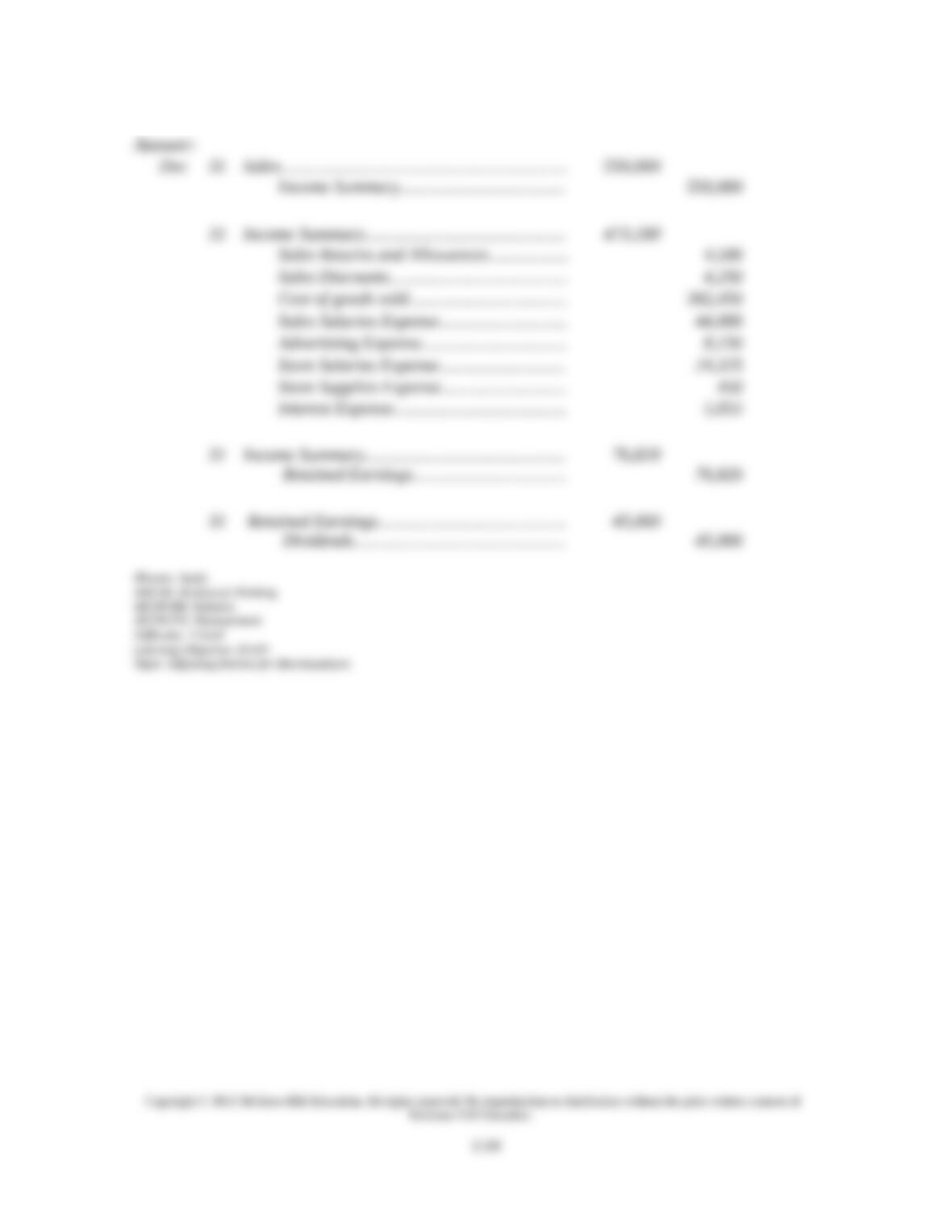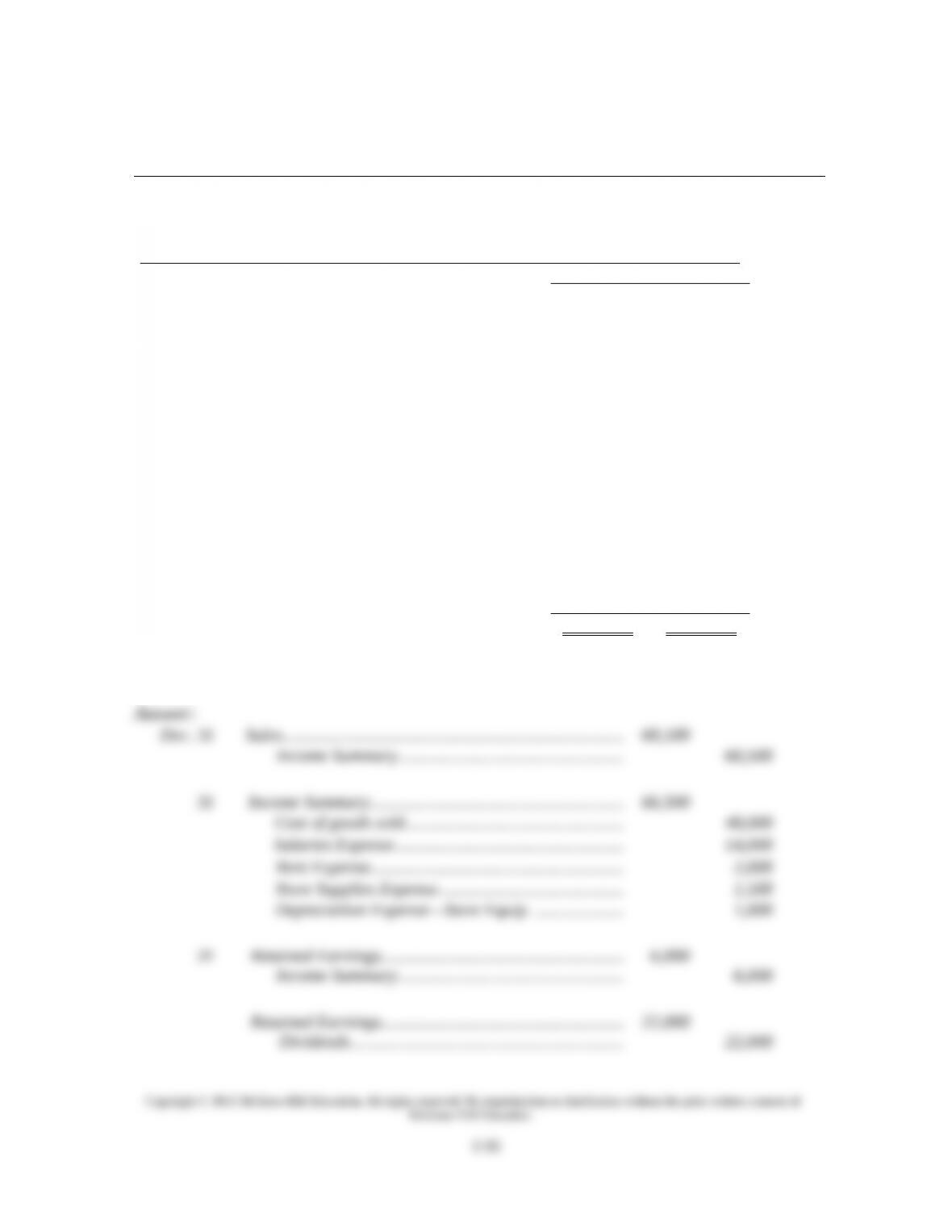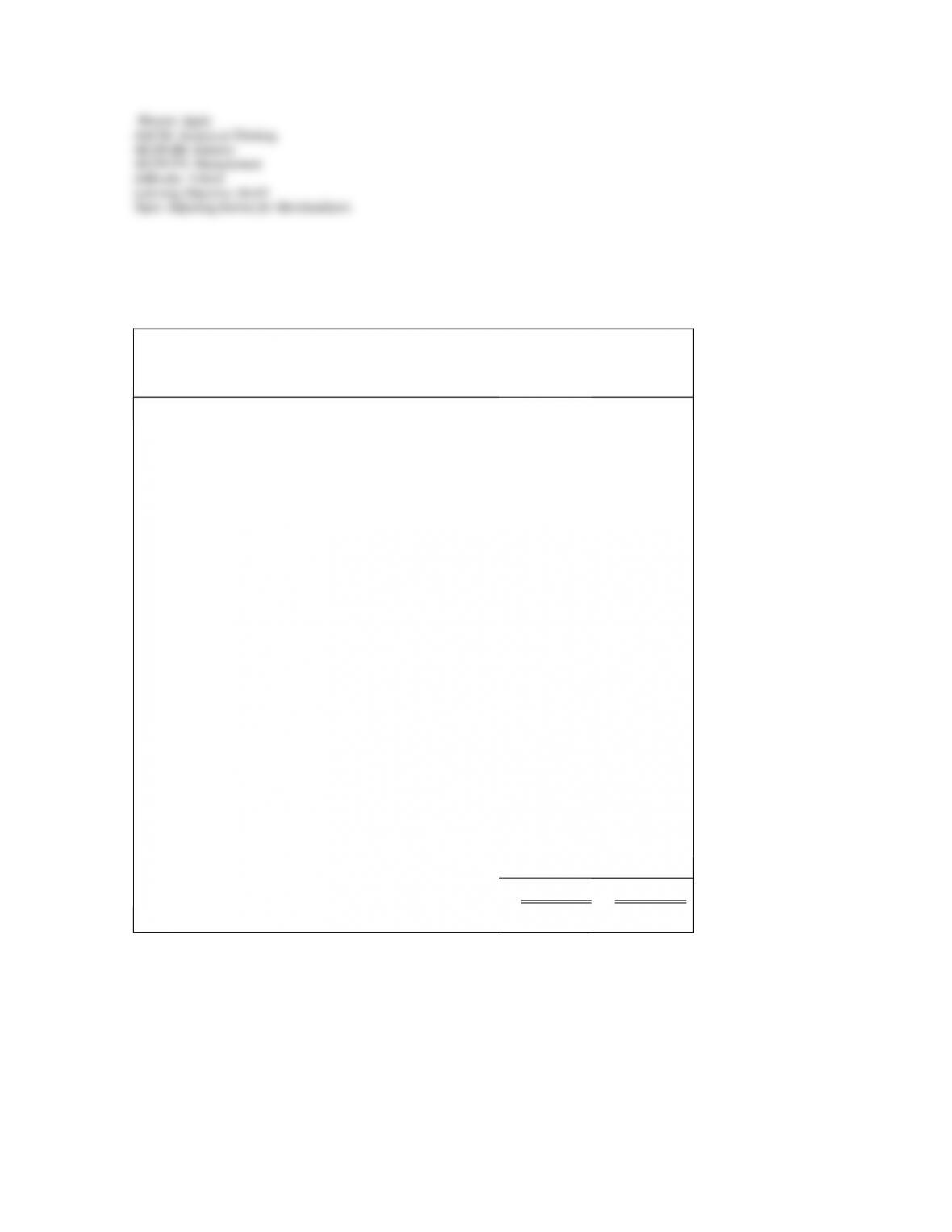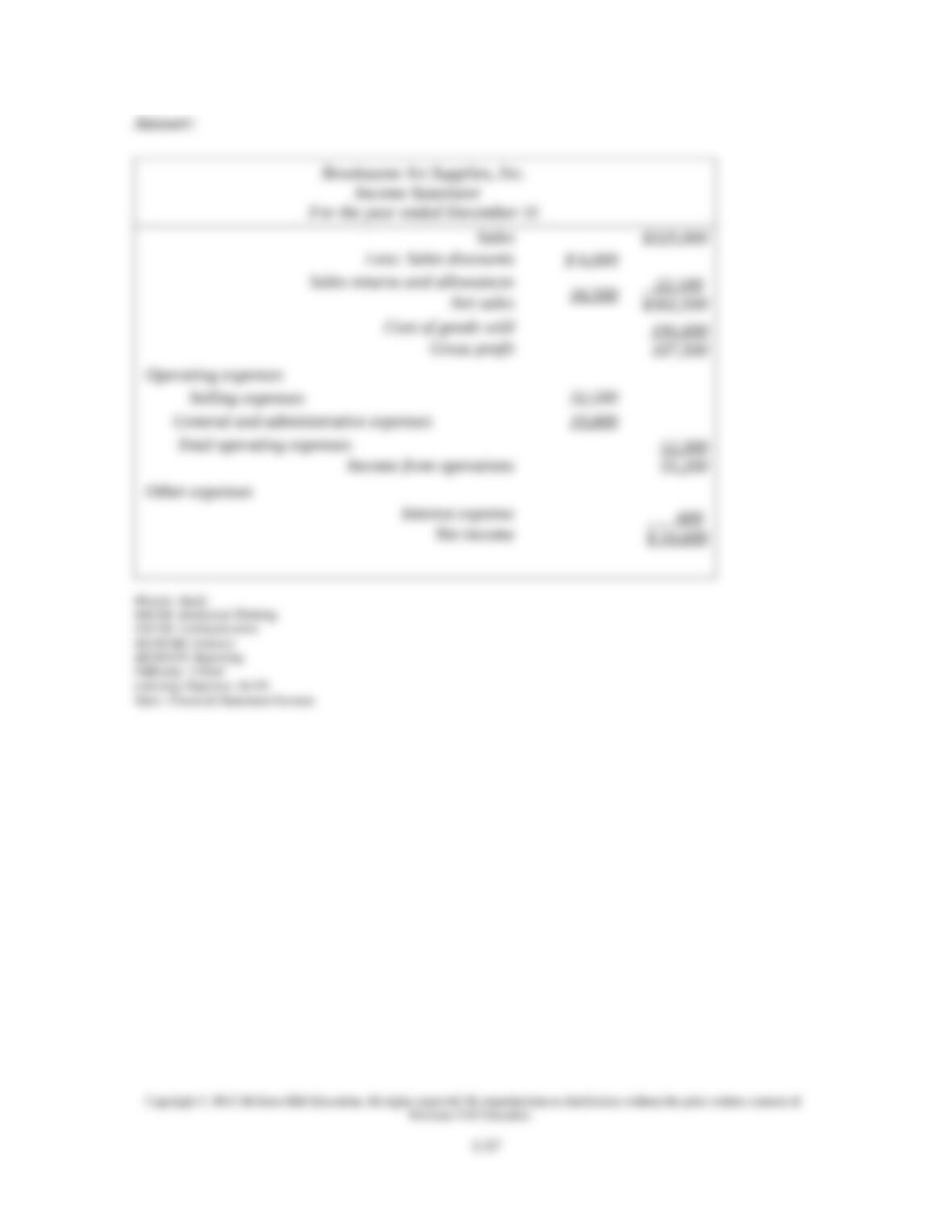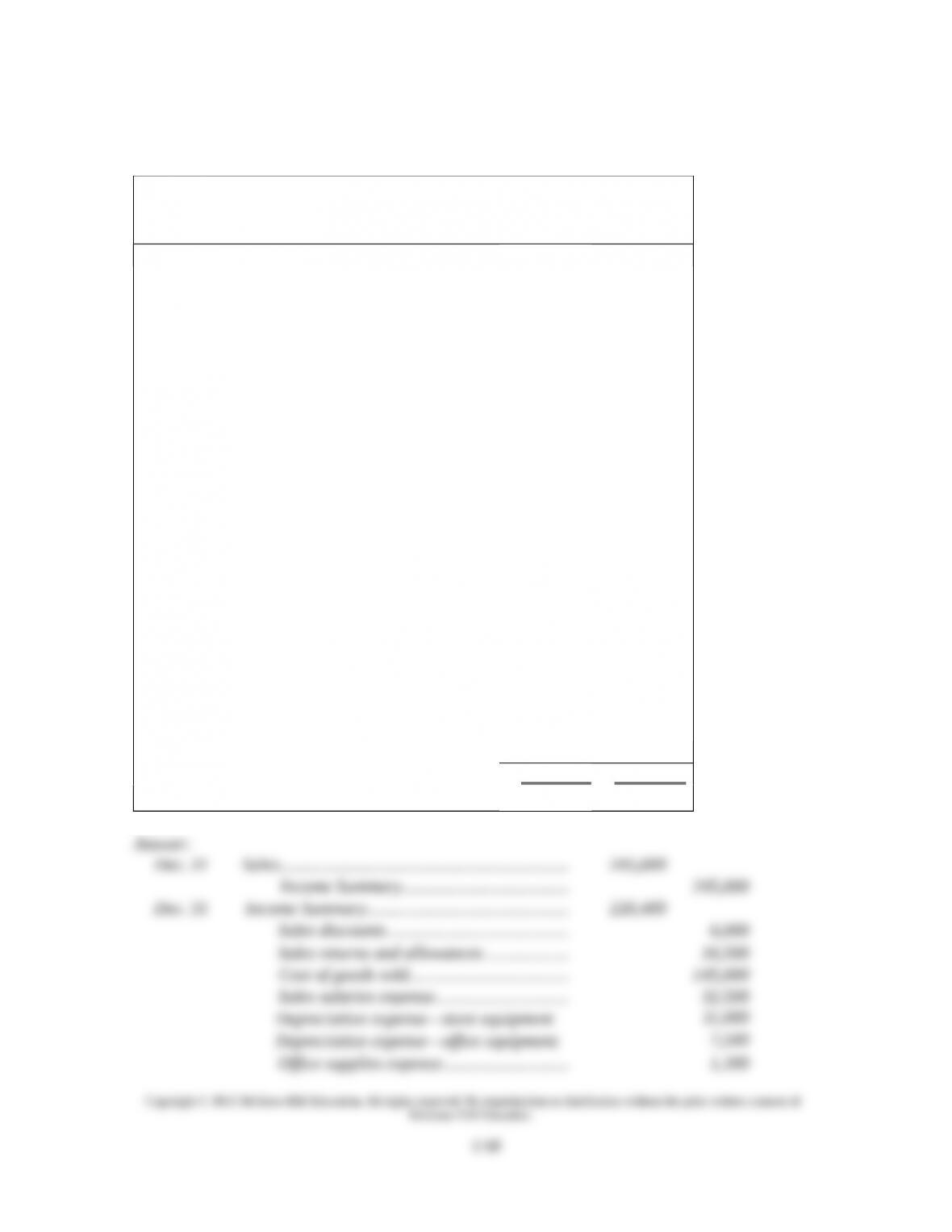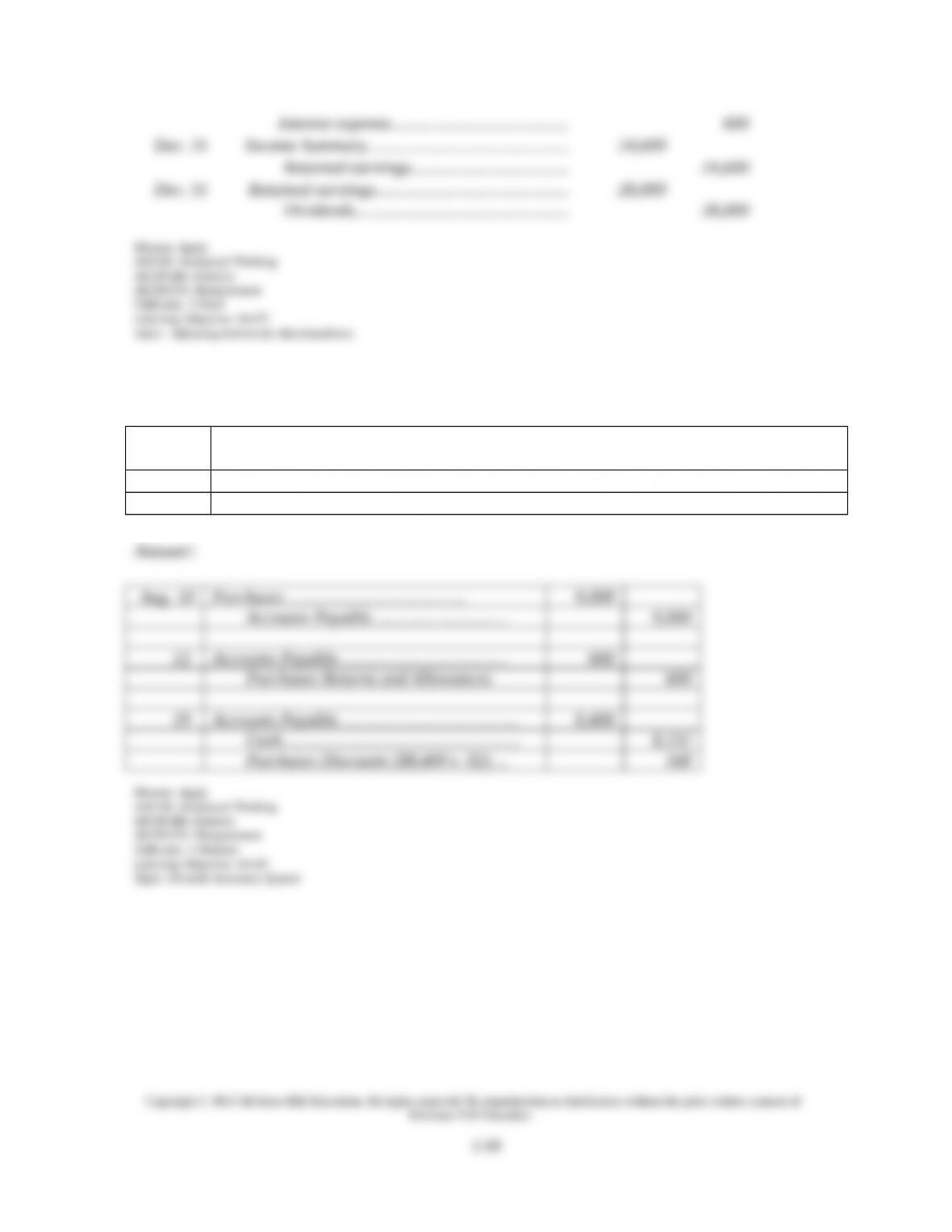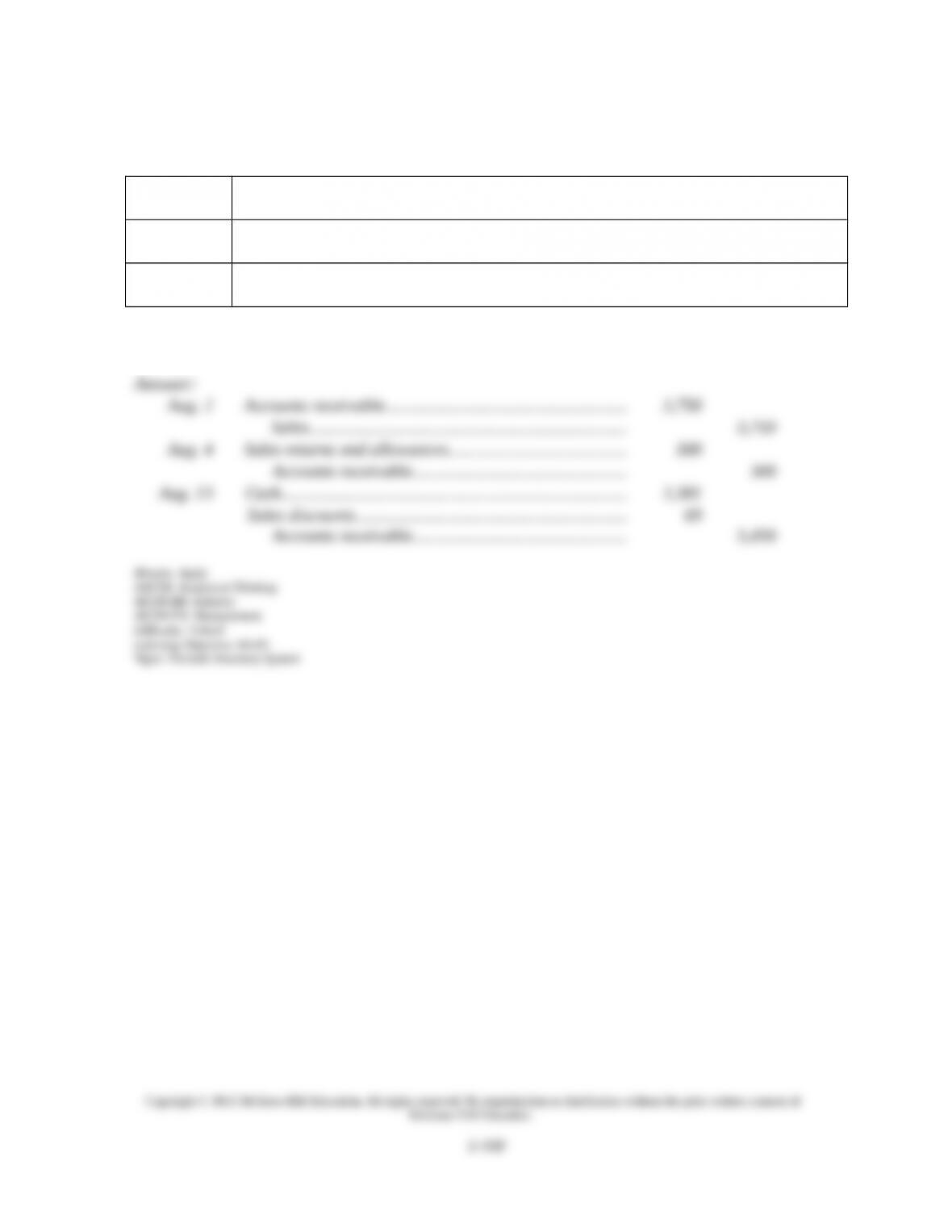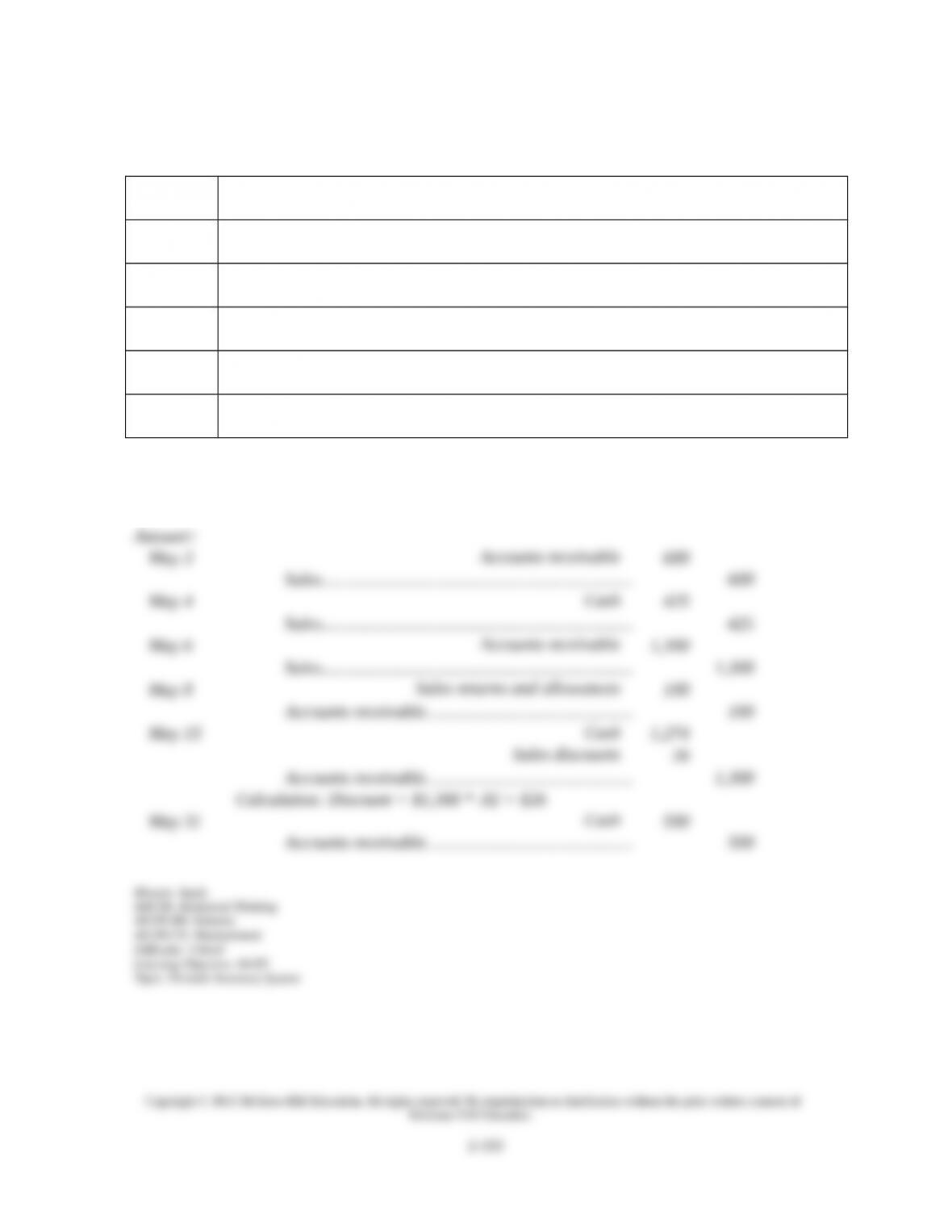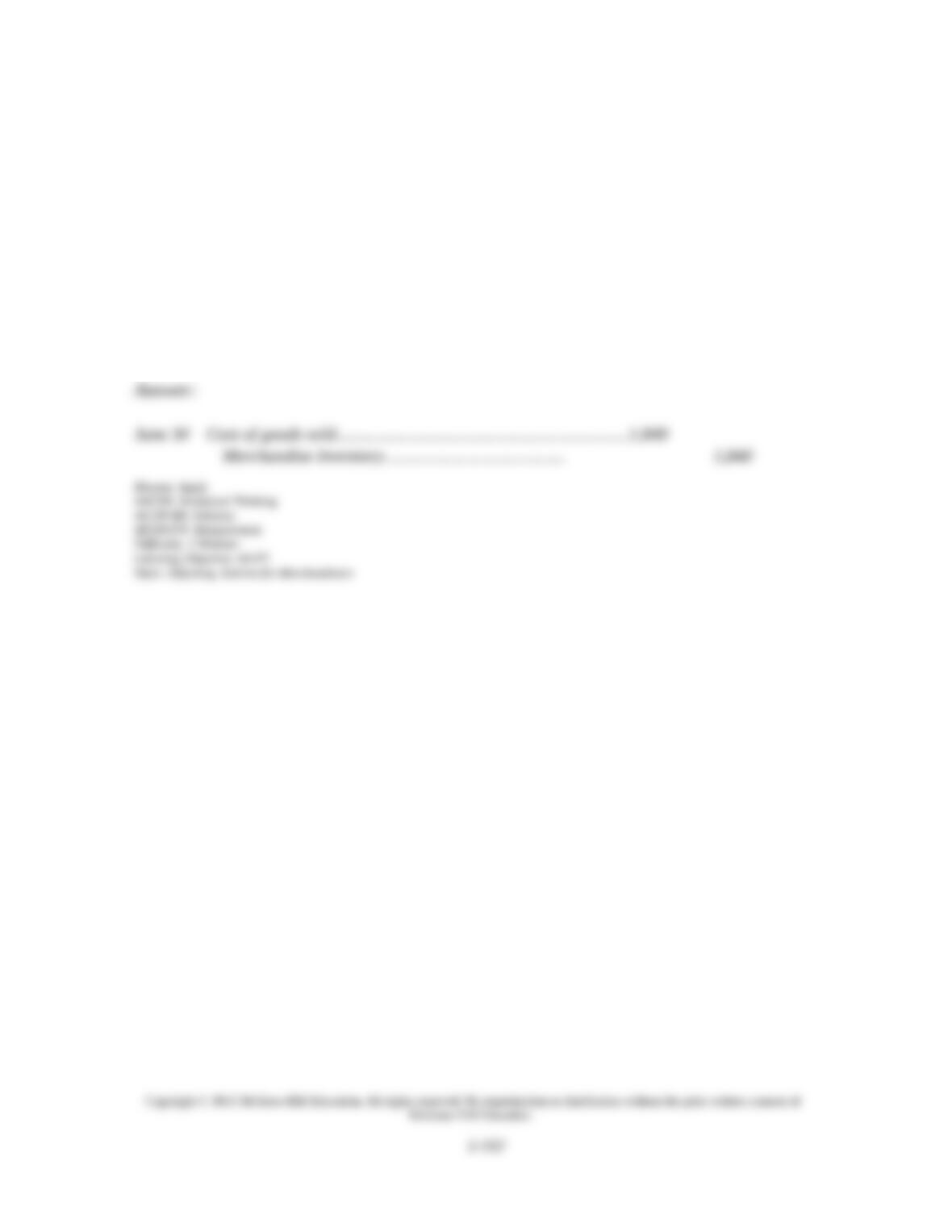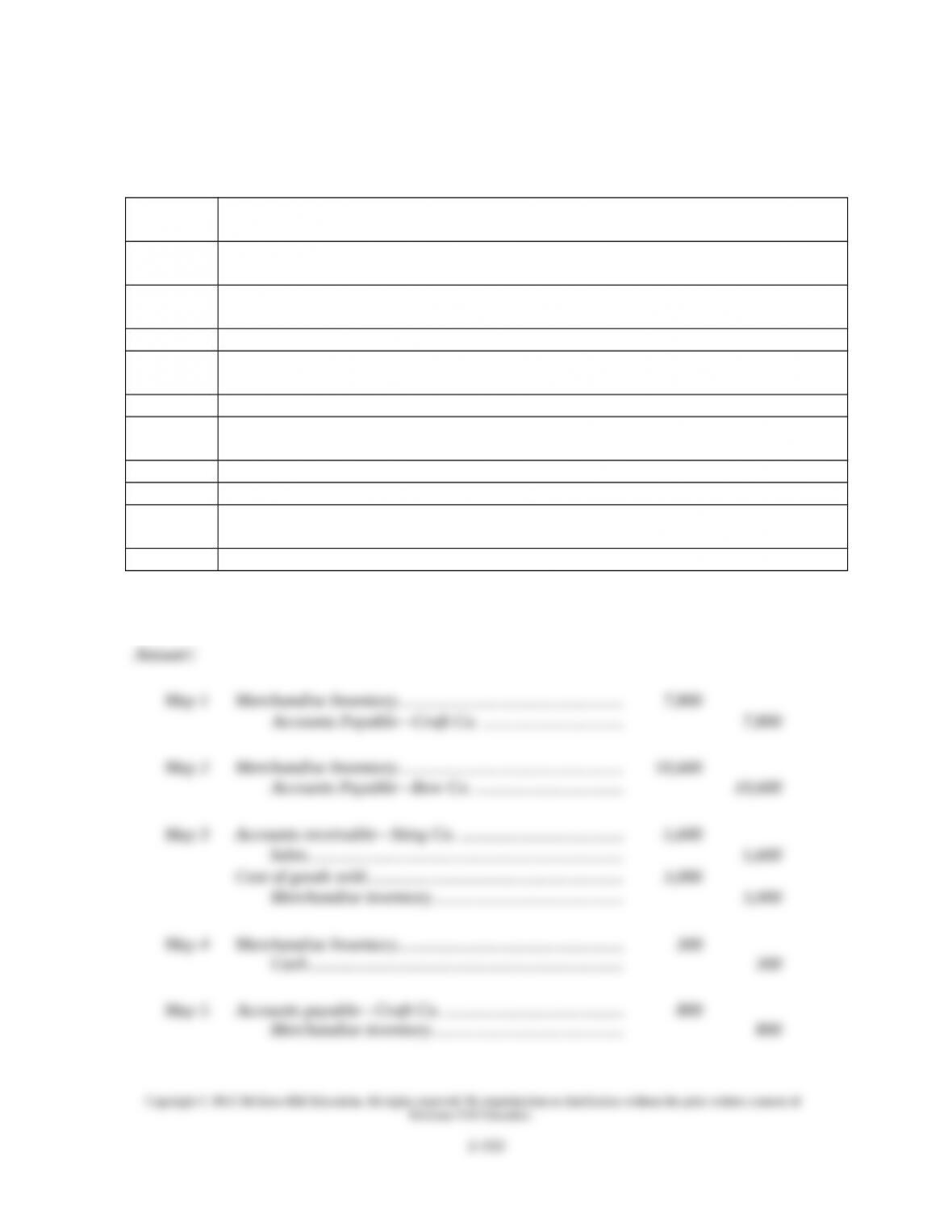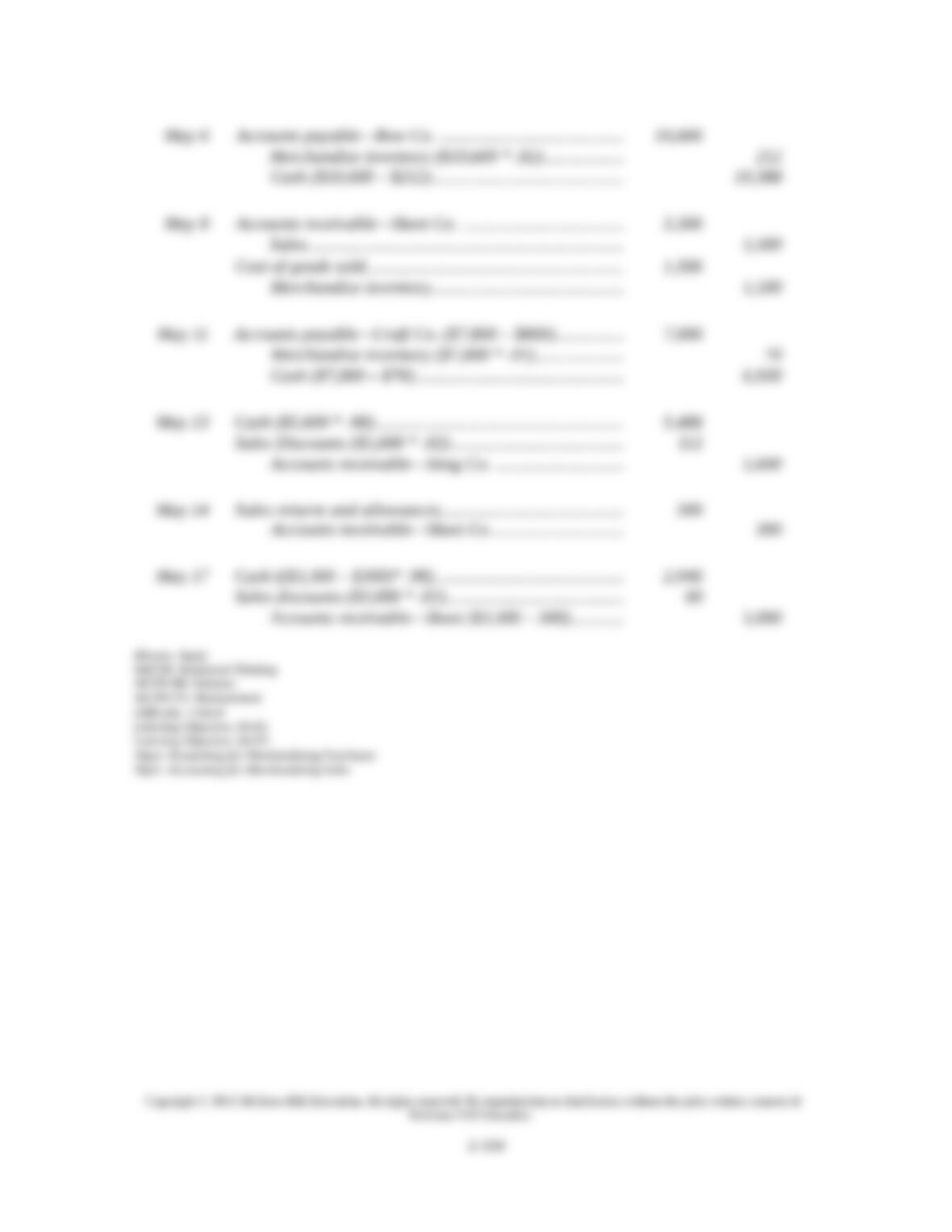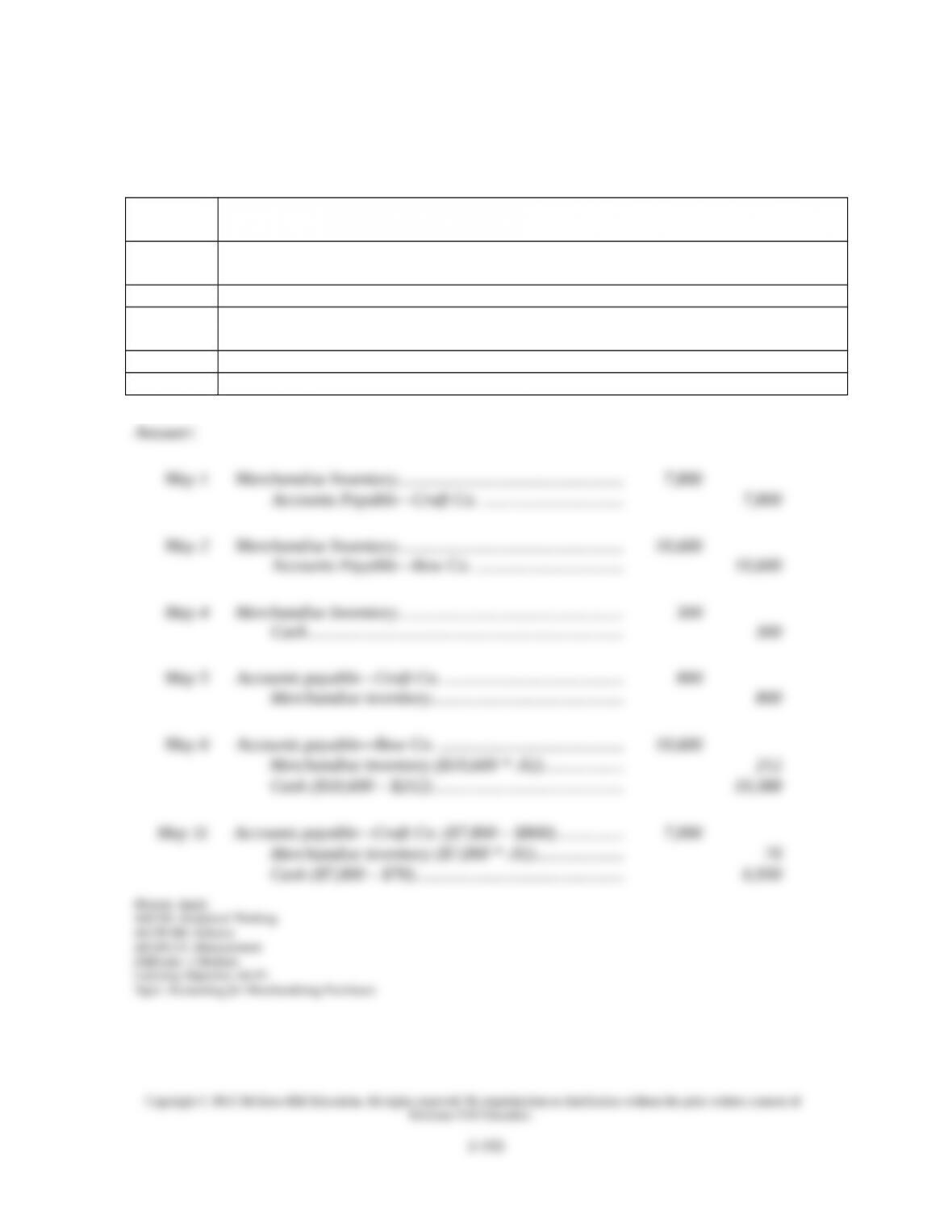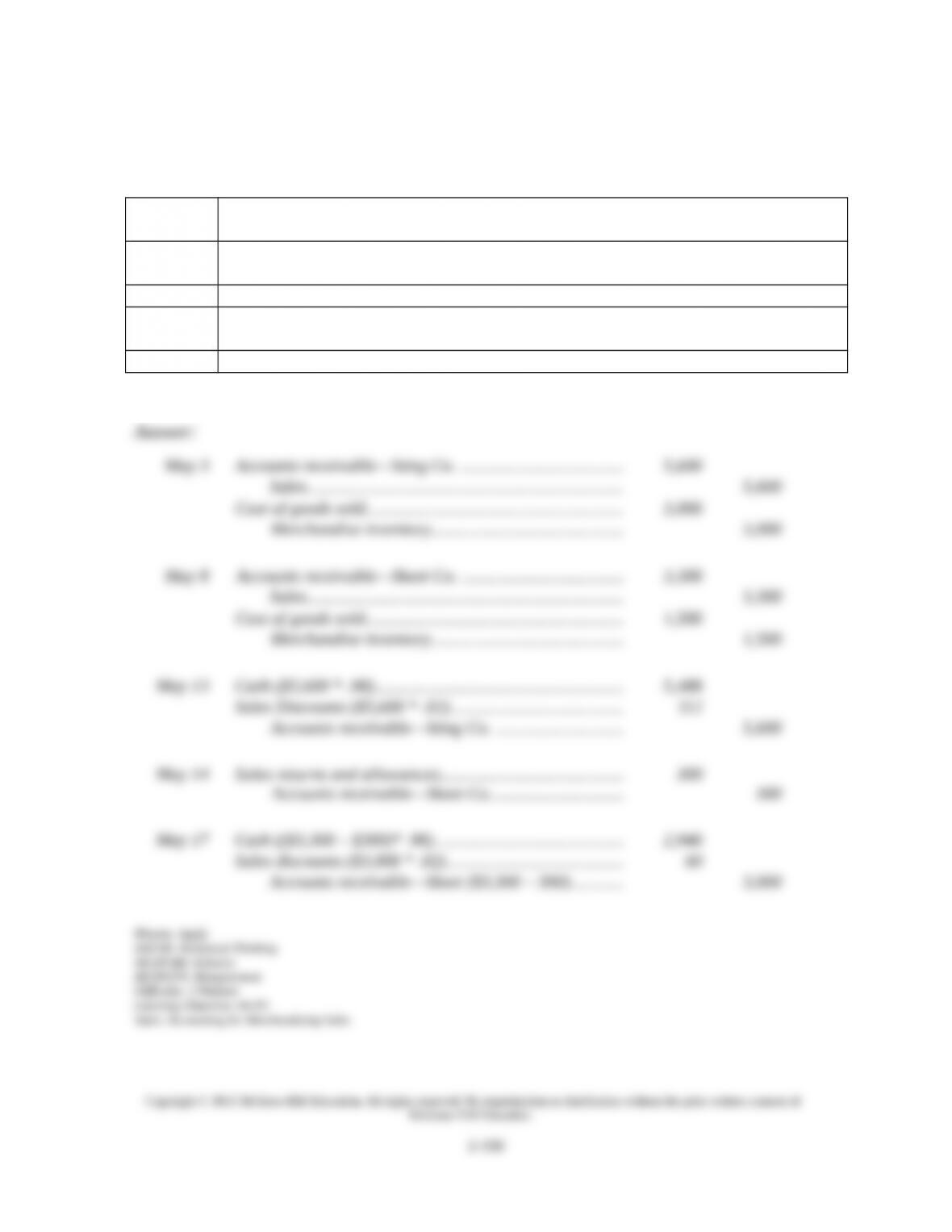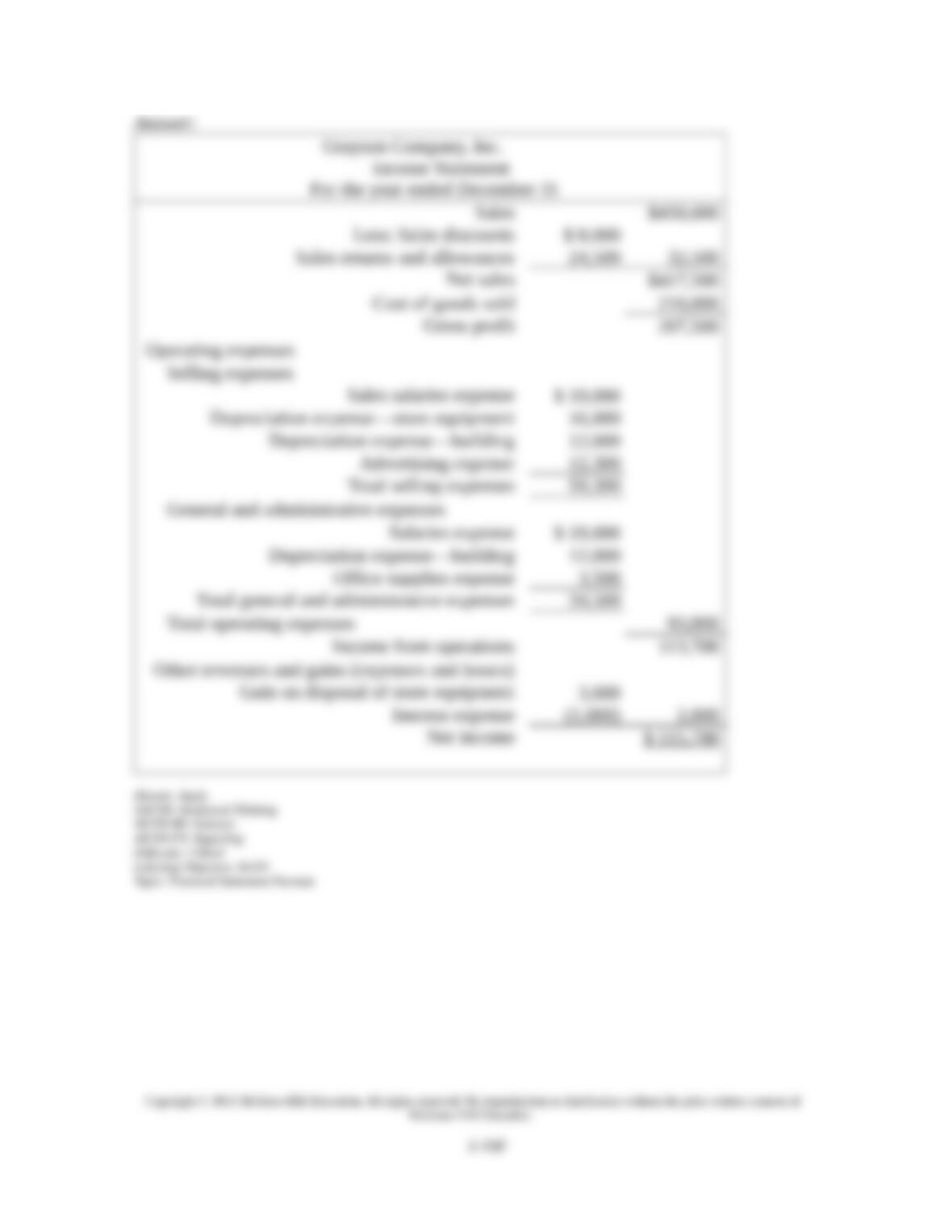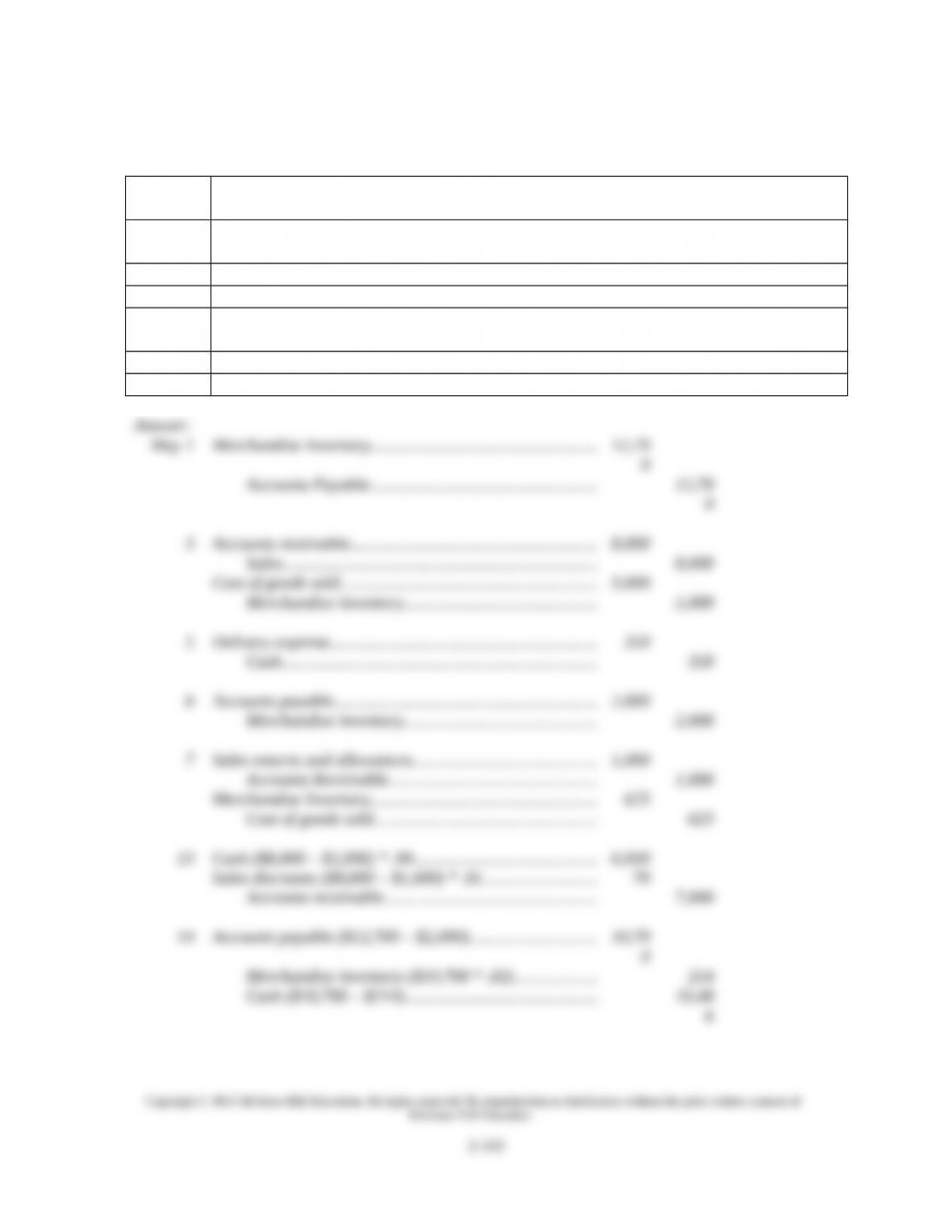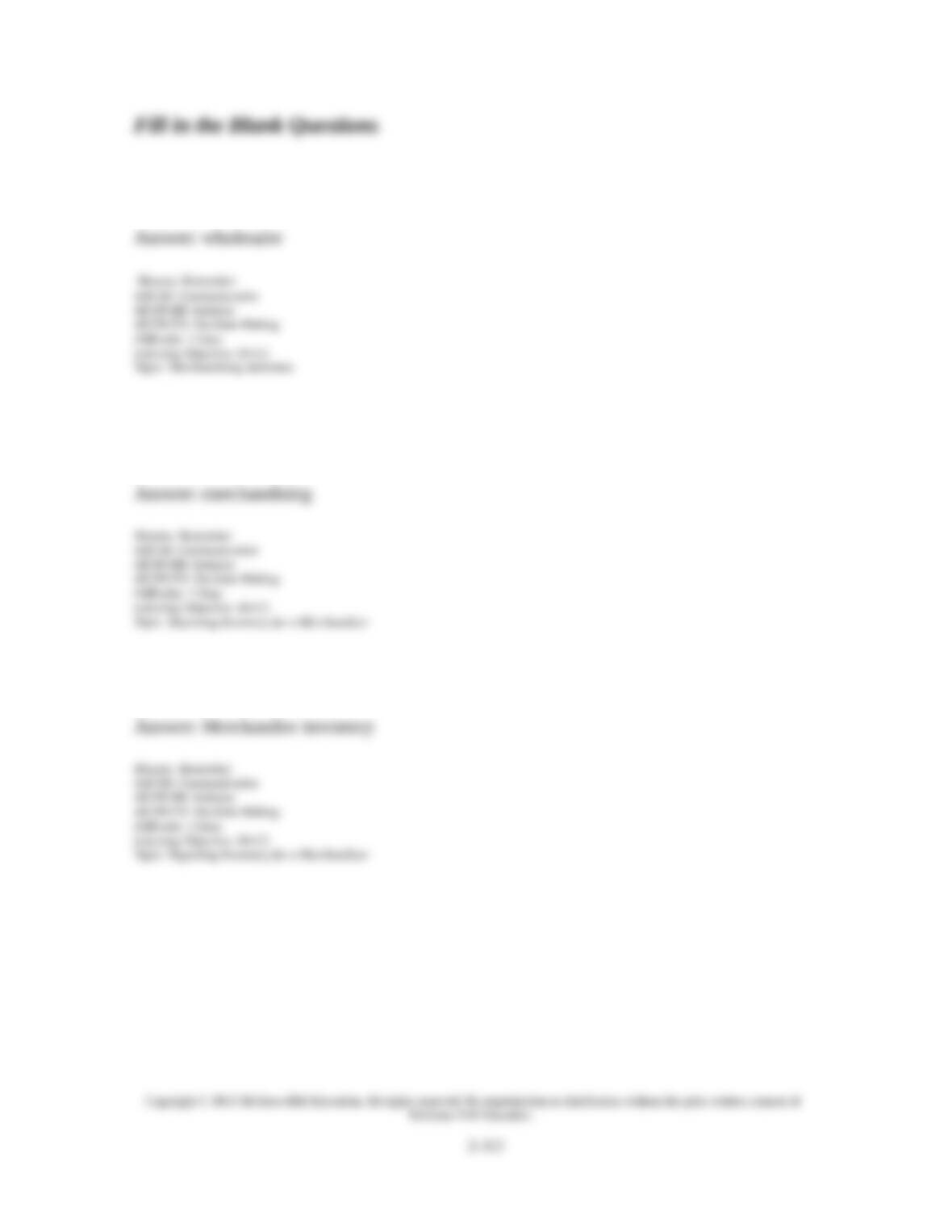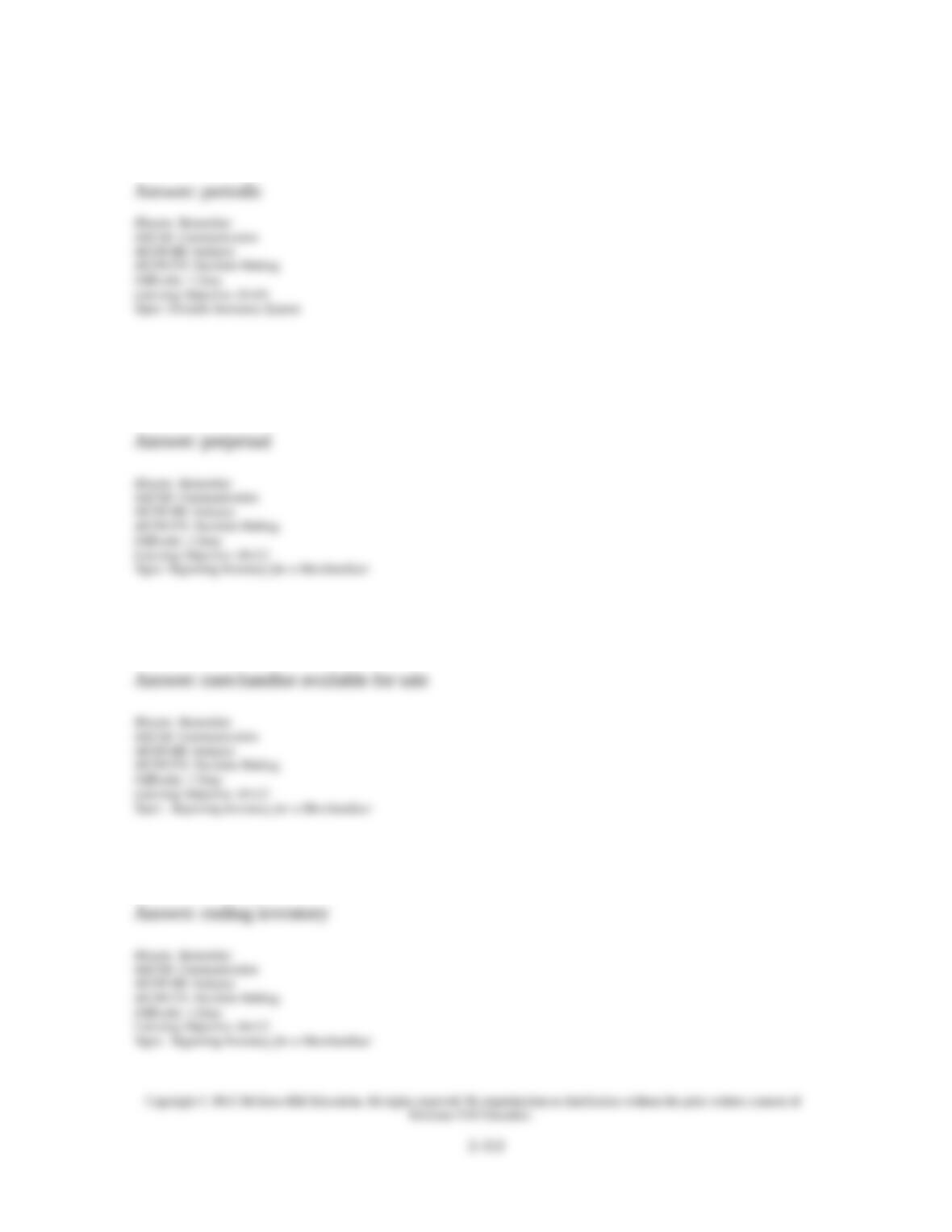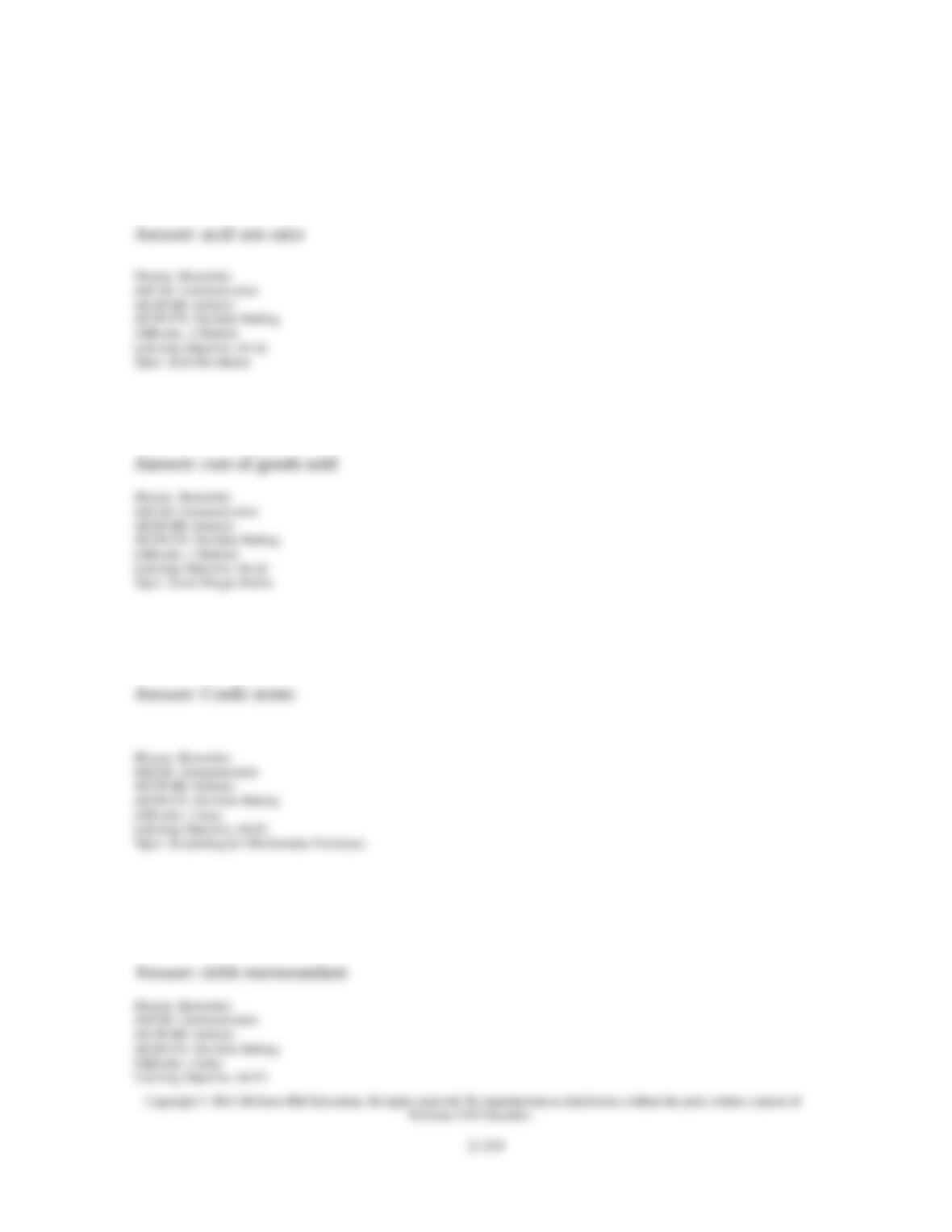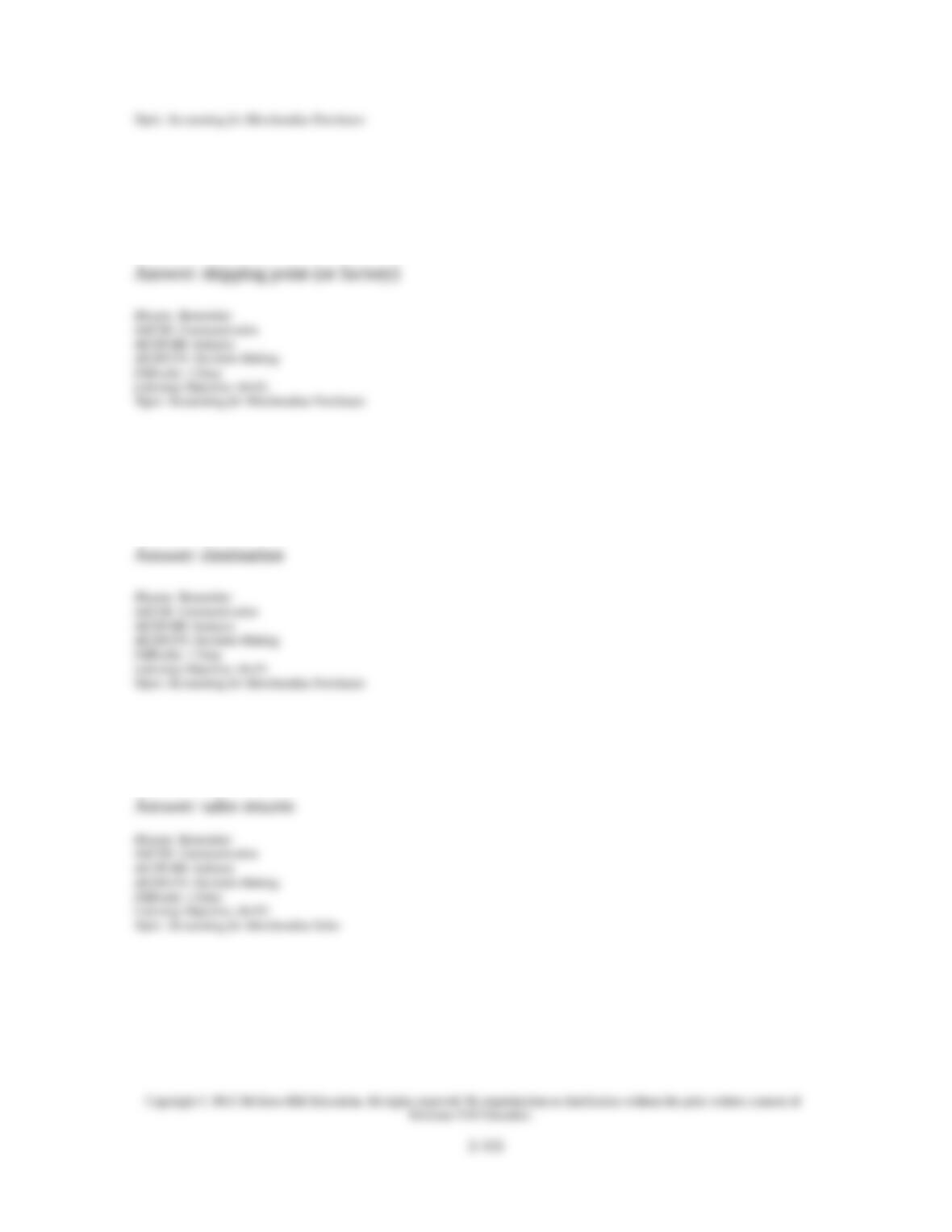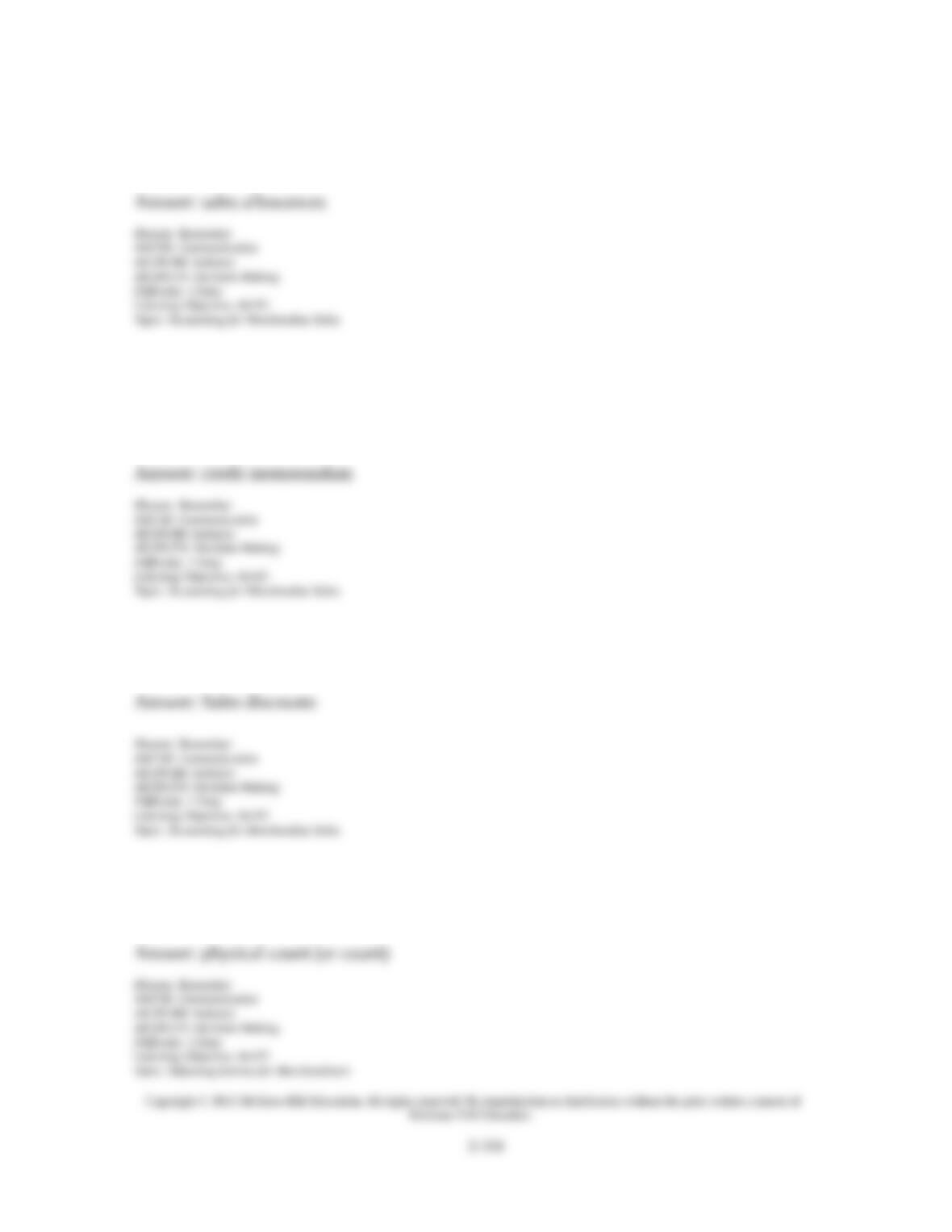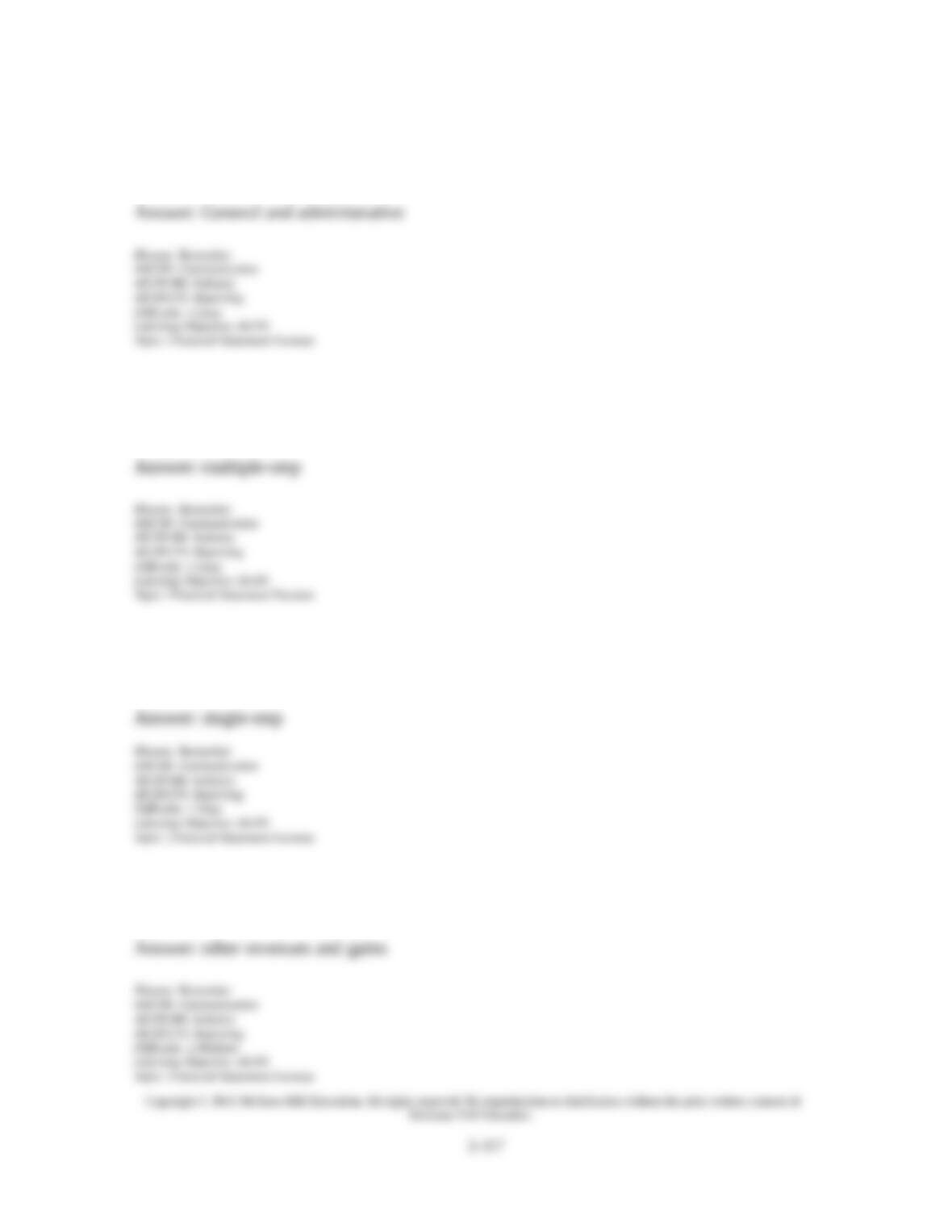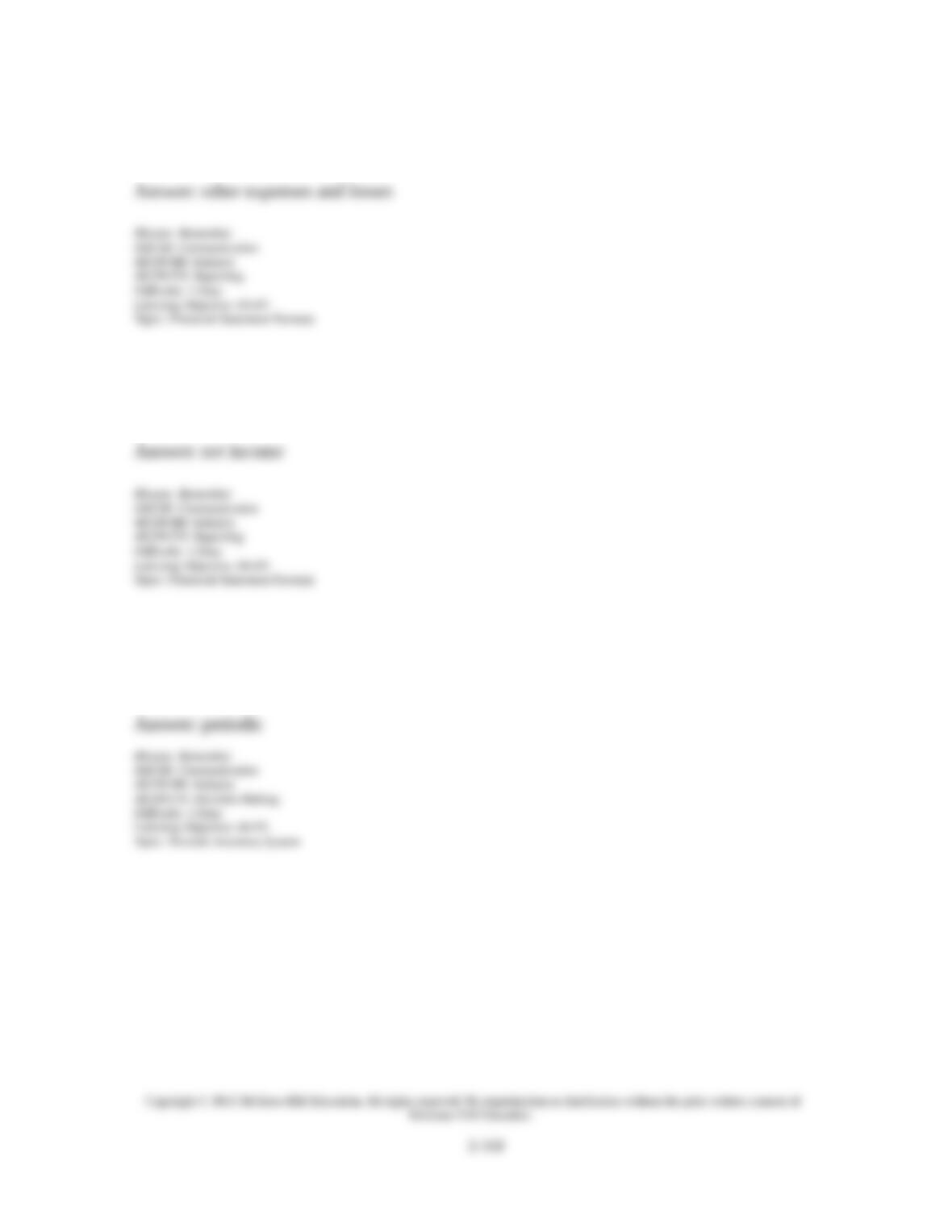199. Vincent Company, Inc. purchased merchandise from Liu Company with an invoice price
of $300,000 and credit terms of 2/10, n/30. Liu Company’s cost for the merchandise was
$200,000. Vincent Company, Inc. paid within the discount period. Assume that both buyer and
seller use a perpetual inventory system.
1. Prepare entries that Vincent should record for (a) the purchase and (b) the cash payment.
2. Prepare entries that Liu should record for (a) the sale and (b) the cash collection.
3. Assume that the buyer borrowed enough cash to pay the balance on the last day of the
discount period at an annual interest rate of 9% and paid it back on the last day of the credit
period. Compute how much the buyer saved by following this strategy. (Assume a 365-day
year and round dollar amounts to the nearest cent.)
1. a. Merchandise Inventory................................................... 300,000
Accounts Payable.................................................. 300,000
1. b. Accounts Payable........................................................... 300,000
Merchandise inventory.......................................... 6,000
Cash....................................................................... 294,000
2. a. Accounts Receivable...................................................... 300,000
Sales...................................................................... 300,000
Cost of goods sold.......................................................... 200,000
Merchandise inventory.......................................... 200,000
2. b. Cash............................................................................... 294,000
Sales discounts............................................................... 6,000
Accounts receivable............................................... 300,000
Discount = $300,000 * .02 = $6,000
3. By borrowing the money on the last day of the discount period and repaying it on the last day of the
credit period, the loan would be outstanding for 20 days (30-10). Interest on the loan is calculated at
9% for 20 days. The amount saved is the difference between the discount received for paying on time
and the amount of interest expense that would be paid to the bank.
Discount taken $6,000.00
Interest expense ($294,000 *.09 * 20/365) 1,449.86
Amount saved $4,550.14
Blooms: Apply
AACSB: Analytical Thinking
AICPA BB: Industry
AICPA FN: Reporting
Difficulty: 3 Hard
Learning Objective: 04-P1
Learning Objective: 04-P2
Topic: Accounting for Merchandise Purchases
Topic: Accounting for Merchandise Sales
Copyright © 2016 McGraw-Hill Education. All rights reserved. No reproduction or distribution without the prior written consent of
McGraw-Hill Education.
5-109
























































































